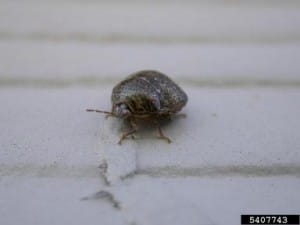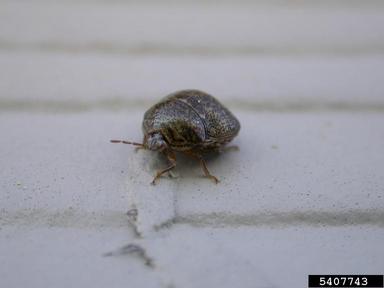See full article from the SR IPM site here
Originally published in Southeast Farm Press
By Jim Langcuster, Alabama Cooperative Extension System

Within only a few days after discovering a native parasitic fly that may reduce kudzu bug numbers significantly over time, Alabama Cooperative Extension System Specialist and Auburn University Researcher Xing Ping Hu has discovered a local egg-parasitic wasp.
This finding — the first discovery of an indigent wasp that parasitizes eggs of the exotic kudzu bug — could prove to be a game changer in the fight against this invasive species, Hu says.
Along with the earlier finding of a fly that preys on kudzu bug adults, Hu says the discovery of this parasitic egg wasp doubles the frontline of defense using natural enemies to fight this exotic pest.
“This local parasitoid wasp has demonstrated a high capacity to reduce significantly the populations of kudzu bugs in soybean fields,” she says.
The discovery was made by Hu’s research assistant, Auburn University graduate student Julian Golec, during a routine investigation of kudzu bug damage in a soybean field.
Hu says kudzu bugs are no different than any other insect species introduced into a new area. Figuratively speaking, entering an area with no known local predators is like drawing a lucky lotto number: the species thrives and its numbers mushroom as it develops into a full-blown invasive species, often wreaking havoc within its new environment.
“That’s why they become invasive in the first place,” Hu says. “They have no natural enemies to balance the ecosystem.”
“It’s as if they’re saying, ‘No one can mess with me so I can do what I want.’”
On the other hand, an incoming species draws an unlucky lotto number if it enters an environment teeming with natural enemies. In such cases, the species’ numbers may spike for a few years until local predators respond to the new species.
In the case of some invasive species, such as the red imported fire ant, the U.S. Department of Agriculture has stepped in to identify predators from the invasive species’ native habitat that could be introduced to reduce their numbers.
